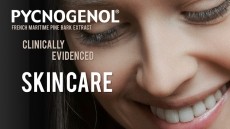Antimicrobial enzyme first step in replacing petrochemicals: Q&A

"Sustainability is not a luxury,” Chief Executive Officer Erika Milczek said. “It’s our obligation, and it’s a global imperative. Curie Co is laser-focused on creating new ingredients from renewable feedstocks to prepare for a petroleum-independent future.”
The launch of Curie Co’s new enzyme has implications for the beauty and cosmetic fields as well as their supply chains. Within an existing formulation, the antimicrobial enzyme can boost or expand activity and it can replace up to 100 units of a similar preservative.
To learn more about the enzyme and its impact on sustainability initiatives, CosmeticsDesign-USA (CDU) chatted with Milczek for a deeper dive.
CDU: What industry pain points does this new enzyme solve for cosmetics and personal beauty care product manufacturers?
Milczek: Manufacturers are seeing a growing demand for “natural,” “sustainable,” or “clean” products, but changing formulations often means sacrificing performance and shelf life, not to mention margin. Our enzyme solutions allow manufacturers to act on emerging trends and customer demands without formulation challenges. In other words, employing our water soluble enzyme product can help to reduce the overall amount of preservative system needed. Enzymes are catalysts, which means you need a very small amount of an enzyme to displace a sizable quantity of a petrochemical. Our first product provides protection from pH 5.5 to 8.5, which is a pH range that has few preservation options available today.
CDU: What is the potential impact of the new enzyme on manufacturers and suppliers to the cosmetics and personal beauty care industries?
Milczek: As far as we know, we've developed the first catalytic preservative on the market. We’ve focused on developing enzymes to displace legacy preservatives because we knew there was a need for new, cost-effective molecules in this space. You need about 100-times less of our enzymes than a typical small molecule preservative — this allows us to be cost competitive while freeing up design space for the formulator.
CDU: Tell us more about the development and formulation process of the new enzyme.
Milczek: Our commercial production of engineered enzymes utilizes existing industrial biomanufacturing infrastructure. Perhaps the most well-known example of a protein that has been made at-scale is the production of insulin for the treatment of diabetes. These technologies have been developed over the last 30 years and have found utility across pharmaceuticals, food and laundry detergent.
You can think about the research and development in two processes: first, enzyme engineering and second, enzyme production. Enzyme engineering begins with directed evolution where an interdisciplinary team of biologists, chemists, and engineers create thousands of novel enzymes and assess their activity under a selection pressure, like ingredients in personal care products. In this first phase, we make small quantities of thousands of enzymes very quickly and identify three to five of the best candidates.
These candidates are then scaled using microbial fermentation in the enzyme production phase. We have skilled scientists and engineers that optimize for making a few enzymes in larger quantities and then partner with leading biomanufacturers to scale production.
CDU: Were there any challenges that needed to be overcome in order to bring the new enzyme to commercial market for product formulation? If so, what were those challenges and what solutions did you develop to solve them?
Milczek: There were absolutely challenges. The biggest tension for us was overcoming a biological conundrum — how do you create and produce an antimicrobial molecule inside of a microorganism? This phenomena exists in nature, so we asked: how is nature doing this? Using nature’s playbook, we created a toolbox for optimizing and producing antimicrobial enzymes. This was an unmet challenge in enzyme engineering.
CDU: Are there any future plans for further innovation and development in this space?
Milczek: Yes! We have an ambitious plan to tackle all industries that rely on preservatives to keep products safe. Our goal is to help those industries develop products that are nature-based from the bottom up. This will of course require additional innovation and development as we scale. Our next area of focus will be food and beverage.






![Chinese study highlights mental health challenges in atopic dermatitis, emphasising holistic patient care. [Getty Images]](https://www.cosmeticsdesign-europe.com/var/wrbm_gb_food_pharma/storage/images/_aliases/wrbm_tiny/publications/cosmetics/cosmeticsdesign-asia.com/headlines/formulation-science/chinese-research-linking-atopic-dermatitis-to-mental-health-underscores-need-for-holistic-care/17040623-1-eng-GB/Chinese-research-linking-atopic-dermatitis-to-mental-health-underscores-need-for-holistic-care.jpg)








